Elizabeth Duncan
November 2019
Sitting in a cleared space at Little Manly Point, I find myself on the site of the former Manly Gasworks. The circular clearing marks the position of the spiral guided gasholder that once rose from this site. I learn this from in situ signage describing the site’s industrial history.
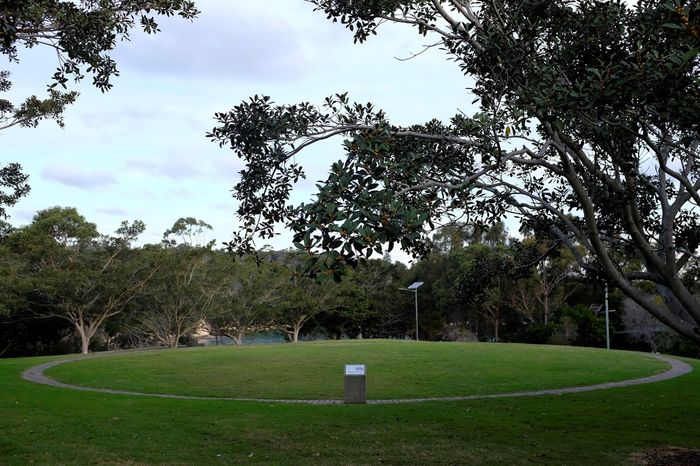
The circumference of the gasholder is indicated by a circle of bricks. Looking at this historical site, marked out as an absence in space, I wonder what this tracing of Sydney’s industrial past provides for the present? Do memorials to our industrial past attempt to contain and control ongoing toxic legacies? What do we really understand about the material traces that may remain?
Sydney’s industrial histories are never too far from view. At Millers Point, the ground below the gasworks lay contaminated for almost a century after the facility was de-commissioned, while Little Manly Point was known informally as Poison Point until remediation processes began in the early 1990s. Reminders of Sydney’s industrial past persist in both benign and harmful ways – as signposts in the city’s cultural landscape, but also as material traces that leach beyond our attempts to narrate these sites into tidy historical positions.
Writing on the topic of the promise of infrastructure, Nikhil Anand, Akhil Gupta, and Hannah Appel (2018) state that ‘While privileging the circulation of people and things, infrastructures also serve to permit states to separate politics from nature, the technical from the political, and the human from the non-human’ (4). States of ruin undermine this capacity for separation, through the erosion of barriers of containment over time, and related spillage and contamination. Once infrastructures become disused, and without continuous maintenance and repair, this process of decay and ruination accelerates. This is especially clear in what Michelle Murphy (2013) describes as ‘chemical infrastructures’: the pathways through which chemicals are produced and consumed, and the ways in which they are intentionally or unintentionally distributed within the environment and bodies. Indeed, as infrastructures break and erode, new chemical relations and embodiments emerge.
The industrial remains of the gasworks at Millers Point and Little Manly Point have marked their landscapes in both curated and unintended ways. The following essay considers narrative and material attempts at remediation of these sites, amid contemporary redevelopment (at Millers Point) and the long-term transformation of the harbour from industrial centre to leisure site (both at Millers Point and Manly). It explores how inhabiting former industrial sites, and reflecting on their toxic legacies, provides a form of response to and an acknowledgement of how we are collectively ‘implicated in the air, land and water of contaminated places’ (Shotwell 2016, 82).
I argue that such practices of memorialisation and inhabitance are necessary to develop a type of relational empathy for our shadow places, even if these sites have been discursively reimaged in ways that suggest an ability to control their ongoing material effects. Attending to the materiality of our histories is necessary for understanding the forms of material and discursive care required in the ongoing present.
Millers Point Gasworks
On 26 May 1841 it was reported in the Sydney Herald newspaper that ‘the application of gas as an agent of light’ was successfully achieved on the previous night. The article describes the significance of this achievement: ‘Australia is the first country, and Sydney the first city, in the Asiatic world – and, indeed, in the southern hemisphere – into which this beautiful art, justly denominated “one of the most important inventions of modern times,” has been introduced.’ Indeed, the use of gas lighting was a ‘modern’ achievement; competitive with the cost of sperm oil, coal gas offered a viable alternative to light derived from the whaling industry, and led to the first networked energy supply in Sydney.
The Millers Point Gasworks was the first in the southern hemisphere, operating from 1841 until 1921. Operations were cut short due to an outbreak of the bubonic plague, which necessitated the construction of a rat-proof wall running along the wharf and what became the thoroughfare of Hickson Road. Hickson Road cut through the Gasworks site, to open traffic into the peninsula. Upon the facility’s closure, the operations of the Australian Gas Light (AGL) Company were transferred to the Sydney suburb of Mortlake.
Almost a century after the decommissioning of the Millers Point Gasworks, the site is being remediated due to the re-vitalisation of the area now known as Barangaroo. The gasworks spanned sections four and five of the new Barangaroo development (the final area to be redeveloped) and buildings 30-38 on Hickson Road. These buildings include the site of the former Carburetted Water Gas Plant and the Main AGL Office, as well as ‘30 The Bond’, a five-star green-rated office complex, which was built in 2004 atop the remains of the former main gasholder, and ‘The Bond Apartments’.
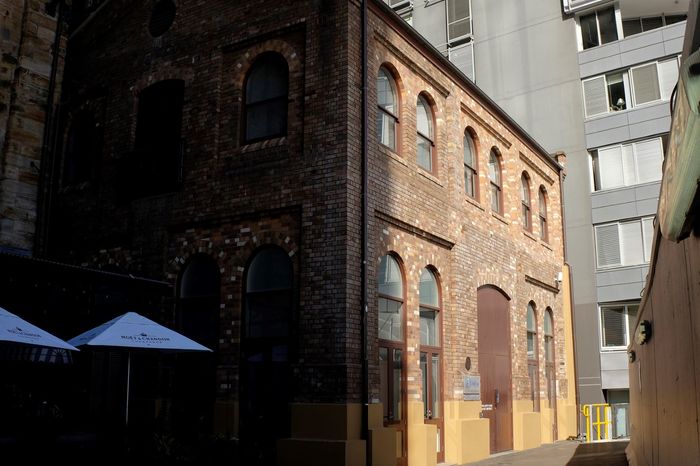

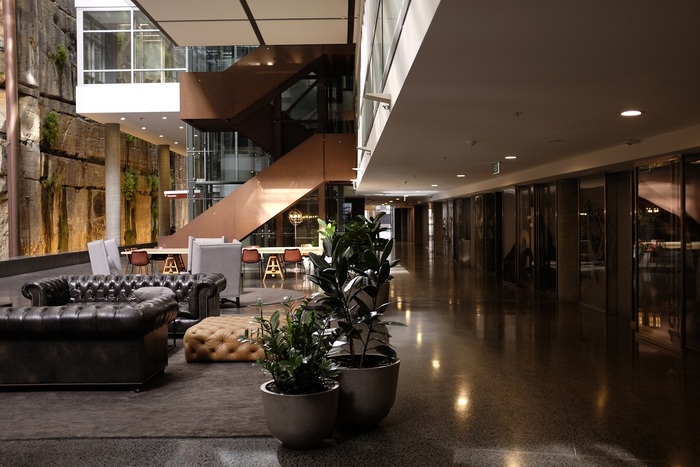
The commemoration of the gasworks’ industrial legacy at Millers Point selectively features aspects of its former industrial history, with certain materials exposed for their historical aesthetic qualities (such as the sandstone wall). Meanwhile, others are invisible, such as the contaminants that remained on the site (including polycyclic aromatic hydrocarbons (PAHs); benzene, toluene, ethylbenzene and xylenes (BTEX); total petroleum hydrocarbons (TPHs); ammonia; phenol; and cyanide). These chemicals, which have the potential to perform as human carcinogens and toxic substances in aquatic ecosystems, were found to be spread through groundwater which was reported to periodically leach into the basement of The Bond apartments and potentially also Darling Harbour (see Environment Protection Authority). However, as The Bond complexes are currently enclosed by construction works, tensions are illuminated between the untroubled commemoration of industry and the role of industrialisation in actively shaping the large-scale remediation efforts in the present.
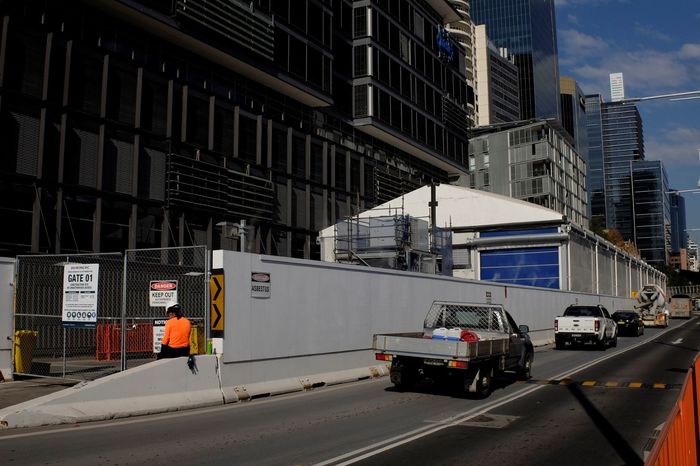
The dominant historical narrative constructed through the site’s internal signage emphasises past industrialisation and heritage preservation. But the continuing chemical infrastructures of the site – specifically the underground coal tar tanks and groundwater contamination – are not acknowledged. It is important that these chemical afterlives of infrastructure are acknowledged, since the chemical and institutional legacies of former energy infrastructures are not hermetically sealed off from the present. Also, AGL remains one of the big three energy suppliers in Australia. These sites, therefore, offer a chance to reflect on the continuing presence of disused infrastructures and the role of memorialisation as a process to ‘purify’ chemical inheritances.

‘Why does it smell? When the gasworks were decommissioned almost 100 years ago the above ground structures were removed, however contaminated materials including coal tar were left in the ground. As we remediate the contamination, odours will be released from the remaining coal tar.’ Image courtesy of the author.
Aside from literal signage highlighting danger and risk, the treatment of the landscape communicates the typically unseen hazardous histories it contains. This work of remediation is undertaken in white tented areas and is visible in the misting jets used to control odour. The spectacle of remediation is tempered by techniques of containment and cloaking; after the event, this risk mitigation will become difficult to perceive.
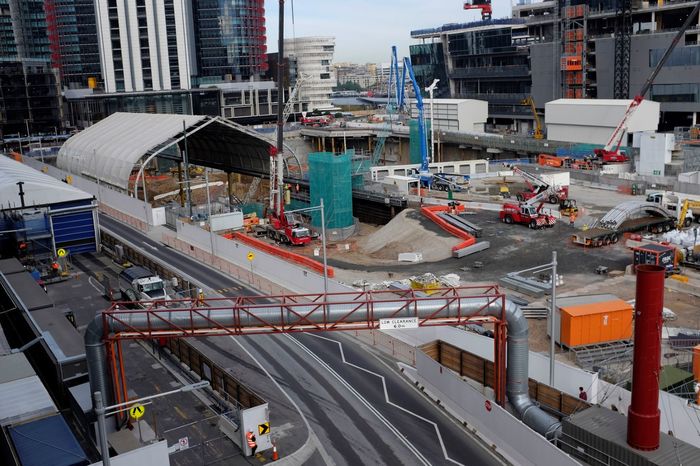
Little Manly Point Gasworks
The site of the Little Manly Point Gasworks is now a park commemorating the area’s industrial heritage. The plaque at the entrance (Figure 8) states: ‘This park commemorates the Manly Gasworks (1885-1964). It was once a bustling industrial site which produced gas and light for the area and is part of the local heritage of Manly.’ Reverence for the contribution of this technology to modernity is clearly evident, with multiple plaques performing historical work by marking the transformation of Sydney into a modern city. Akhil Gupta (2018) argues that while infrastructure often functions ‘as an index of modernity and symbol of development’, such logics typically fail to consider the afterlives of infrastructure (68).
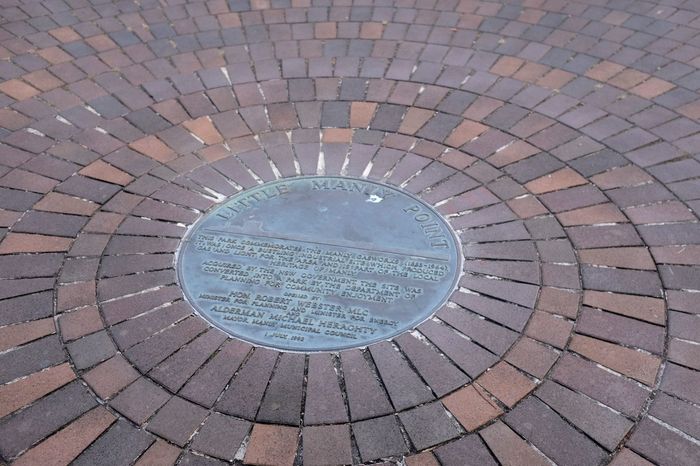
The industrial land-turned-wasteland was finally opened as parkland in 1992. With the landscape now mostly cleared of its visible industrial past, the plaques act as reminders, and as modes of encoding the landscape with particular narrations of time. Signage throughout the park positions the reader in the industrial history of the site and asks the viewer to participate in tracing this history while they visit. But within the dominant cultural narrative, that is, one that espouses the gifts of modernity gained through industrialisation, the sign can also serve as a signifier of pollution.
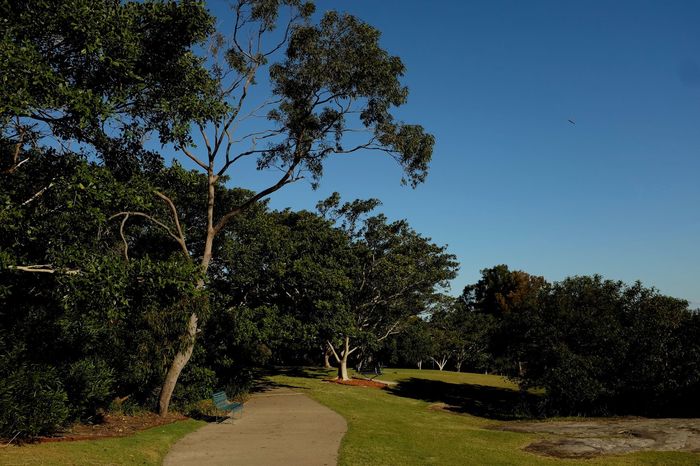
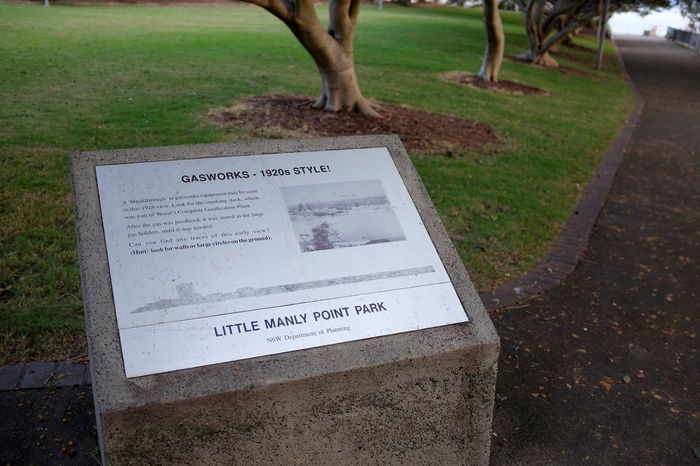
An industrial aesthetic persists, remaining a central part of the cultural heritage of Sydney. Despite this, the industrial aesthetic does not reveal the ‘unwelcome returns’ (Hawkins 2007) of these former sites. Troubling industrial materials, such as toxic substances, lie hidden both in historical record and in the landscape, especially when these materials exist underground. However, in moments of material upheaval, when the form of the industrial aesthetic is ruptured and the underground becomes exposed through processes of remediation or construction as is seen at Millers Point, contamination risks again becoming a pressing concern and the management of these risks becomes a matter of visual display.
Remediation is rarely a comprehensive and therefore completed process, and as such it requires ongoing processes of maintenance and repair. At Little Manly Point it was acknowledged by Manly Council (2004) that ‘small amounts of contaminates would continue to be present on site’ (62). An industrial stormwater drain is in operation to manage any ongoing leaching.
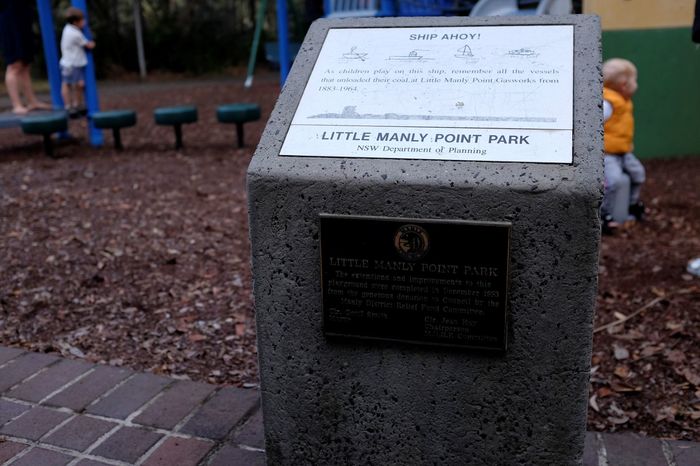
Gasworks were typically located along water bodies to facilitate the delivery of coal, as the gas was produced through a process of burning coal and collecting the vapours. For this reason, continuous coal inputs were needed to run these facilities. The social and environmental cost of this activity is not, however, reflected upon in this memorial. The commemorative essence of the park contributes to the narrative of a bygone industrialism; although in the absence of the original buildings, traces and signatures are used to reposition the memory of the gasworks on the headland. In this instance, the connections of utility between the sea and the gasworks are recreated in the landscape with children’s equipment and ringed with the signature of bricks. Toxic remains are ‘purified’, firstly through remediation and then through a contemporary heritage aesthetic, but nevertheless remain part of the material legacy of these sites.
Chemical histories continue to enact their toxic agencies in our present. Astrida Neimanis et al. (2017) identify how the materiality of wars long past continue to be ‘rewritten’ and ‘recomposed’ across time and space (636). Parts of Sydney’s industrial past are similarly erased from recent memory but return to consciousness when searched for, or unearthed within the landscape. The former gasworks sites at Millers Point and Little Manly Point, each in their own way, exemplify this return, rewritten and recomposed.
As I return to explore Little Manly Point, I notice a sign previously unseen that is badly worn. This wear reminds me that commemoration, like remediation, is a practice that is actively ongoing, as both matter and memory erode and become otherwise in relation to the places in which they are situated.

Inhabiting space with a view towards relocating the industrial histories of Sydney allows for the possibility of more continuous understandings of place to emerge. While industrial energy production has been displaced from Sydney, these first sites of energy infrastructure allow us to engage not only with what this infrastructure promised, but also with what it left behind.
Acknowledgement: I would like to acknowledge the generous feedback from Liam Grealy, Christen Cornell, Astrid Lorange, Marilu Melo, and Phil McManus which helped give this work its form. All photographs were taken by the author between May and June of 2019.
Works Cited
Anand, Nikhil, Gupta, Akhil and Appel, Hannah. 2018. The Promise of Infrastructure. Durham, NC: Duke University Press.
Gupta, Akhil. 2018. ‘The Future in Ruins: Thoughts on the Temporality of Infrastructure.’ In N. Anand, A. Gupta and H. Appel (eds) The Promise of Infrastructure, 62—79. Durham, NC: Duke University Press.
Hawkins, Gay. 2007. ‘Waste in Sydney: Unwelcome Returns.’ PMLA, 122(1): 348—351.
Manly Council. 2004. Little Manly Coastline Management Plan. May.
Murphy, Michelle. 2013. ‘Chemical Infrastructures of the St Clair River.’ In S. Boudia and N. Jas (eds) Toxicants, Health and Regulation since 1945, 103—116. Abingdon and New York: Pickering and Chatto.
Neimanis, Astrida, Neimanis, Aleksija and Åsberg, Cecilia. 2017. ‘Fathoming Chemical Weapons in the Gotland Deep.’ Cultural Geographies, 24 (4): 631—638.
Shotwell, Alexis. 2016. Against Purity: Living Ethically in Compromised Times. Minneapolis: University of Minnesota.